The Great Vacation-Rental Debate
Tensions Increase over Santa Barbara’s Accommodations for Short-Term Stays
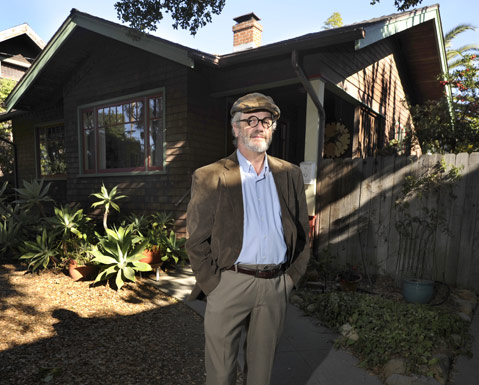
As expected, here in the world-class destination of Santa Barbara, the debate over short-term vacation rentals has pitted neighbor against neighbor, homeowner against property manager, lawyer against government, and the city attorney’s office against the multibillion-dollar online industry that makes it easy for anybody with an extra bedroom, house, or entire apartment complex to profit from steady waves of out-of-town visitors.
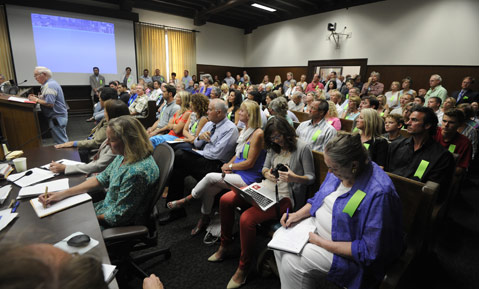
For the past several months, the public displays of contention at both the city and county level have forced Santa Barbara residents and their elected politicians to deeply consider the character of residential neighborhoods and whether short-term vacation rentals can coexist on the same street. Sure, vacationers and other travelers fuel the economy, and their hosts (the legitimate ones, at least) purchase business licenses and pay taxes on cash flow. Last year alone, the city raked in $1.2 million in Transient Occupancy Tax (which does not include hotel tax), while county coffers collected $1.4 million. That’s not chump change. Plus, the Santa Barbara–based companies that coordinate such home-style lodging steadily employ a middle-class workforce, from marketers and bookkeepers to the housekeepers and landscapers responsible for maintaining rentals as the nicest-looking homes on any given block. However, it only takes a few incorrigible weekend renters to shut down the tranquility of a family neighborhood. Common are the horror stories of clogged street parking, over-amplified playlists, and, if the offending party pad has a pool, loudly announced and poorly executed drunken cannonballs at 3 a.m.
While it’s not against the law to cut loose on private property, the burgeoning cottage industry of property owners renting out rooms or homes on the short-term (fewer than 31 days) has run up against city and county zoning laws. For decades — way before online hosting platforms such as Airbnb and VRBO or Craigslist or even classified ads in the back of this newspaper — these land-use laws have designated the majority of residential neighborhoods as family-friendly zones of stability apart from the commercial bustle of areas described for hotels or B and Bs.
For the most part, that’s why Santa Barbara city officials unanimously cracked down on short-term rentals this past summer. And just last week, councilmembers voted (again, across the board) to forego any effort to write a new law allowing home sharing, where on-site homeowners briefly rent out extra bedrooms to out-of-towners. The city’s position is among the strictest in the state, mirroring Monterey and, in Marin County, the town of Tiburon.
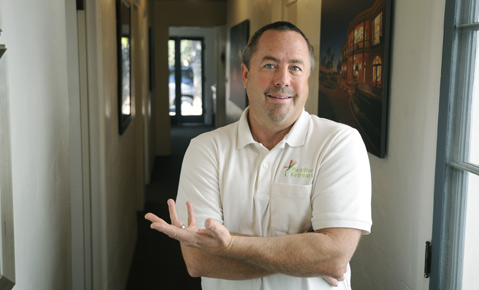
Santa Barbara County officials — who regulate vacation-rental hotspots throughout the unincorporated Santa Ynez Valley and Montecito — aren’t far behind. Last week, the County Planning Commission voted 3-2 to direct staffers to update zoning code to include a ban on short-term rentals in residential areas. In a separate motion, all five commissioners remained open to short-term rentals located on ranches and farms, where, especially in the north county, traffic and noise issues dissipate across rural landscapes far away from distant neighbors. The commission will revisit the issue in February before it goes to the Board of Supervisors in the spring.
Aside from the guiding principles of residential zoning laws — but no less critical — city and county officials have also been moved by stories of long-term residents bumped from rentals as landlords clear space to accommodate the more lucrative short-term market. In that respect, the growing number of vacation rentals has further crippled housing options for folks trying to simultaneously live and work in Santa Barbara. Short-term rentals might not hit the long-term market as hard as, say, the region’s private English-language schools or heavily enrolled higher-education institutions, but when Santa Barbara’s vacancy rate is at half of one percent, every bedroom lost to tourism hurts.

“We have an important housing/job balance to achieve, and the commercial use of residential properties for short-term vacation rentals runs completely counter to those goals in the city’s General Plan,” said Rob Pearson, executive director and CEO of the Housing Authority of the City of Santa Barbara. “What kind of community do we want? For me, it’s having a workforce that gets to live where it works, or at least within a relatively easy commute. Sadly, Santa Barbara is fast becoming a town where this is not true for middle-income, or even upper-middle, workers due to an inadequate housing supply. Allowing housing to become short-term vacation rentals increases its cost, reduces supply, and exacerbates the problem.”
Naturally, the issue is more complicated than that. For years, both the city and county have been issuing business-license tax certificates to homeowners wanting to run their properties as short-term rentals. That common practice has helped create an estimated 2,550 vacation rentals countywide, with 1,200 in the city alone, according to analyst Jeanette Rottas with TXP, an economic consulting firm hired by vacation-rental marketplace HomeAway to crunch the numbers in Santa Barbara County. (Concrete tallies remain elusive, however, because many hosting platforms have yet to provide hard data on the number of listings in any given neighborhood).
“As a city, we’re culpable,” Councilmember Gregg Hart said at last week’s meeting. “We can’t continue to do that.” That notion of culpability will likely gain substantial legal traction in the coming weeks.
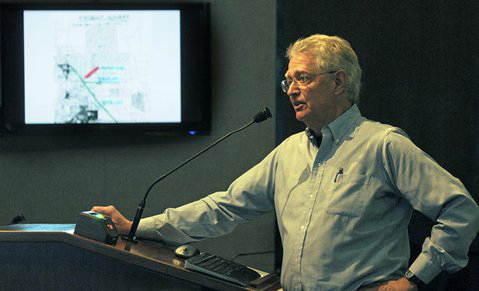
The Tourist Next Door
A decade ago, longtime Santa Barbara resident and UCSB grad Theo Kracke moved his family and apparel business to Ventura. They didn’t want to sell their Mesa home, so they opted to turn it into a short-term rental. When they had trouble finding a reputable company to manage it, Kracke decided to do it himself. In 2006, he launched Paradise Retreats, a management company that caters to homeowners with high-end second homes they’d like to rent out when they’re not using them. As the business grew, the Krackes moved back to run it full-time. These days, Paradise Retreats has 24 employees and a few dozen independent contractors (housekeepers, handymen, gardeners) to manage 110 properties countywide. Since its inception, Paradise Retreats has been operating transparently with a valid business license and has paid the city more than $1.2 million in Transient Occupancy Taxes, Kracke said. “You could say we have been in a partnership with the city.”
There are 349 legitimate (license-holding, tax-paying) short-term rentals within city limits, according to the Planning Division. Kracke’s company manages 40 of those, 30 of which — including the one he owns personally — are located in single-family neighborhoods where such use has always been illegal. None of his clients’ properties, Kracke said, were purchased solely to be profitable upscale vacation rentals, none are home-shares, and stays of fewer than 30 days make up 80 percent of his business. With city enforcement officers now on high alert, Kracke has been given until the end of next year to remove those offending properties from his portfolio. “My business will drop by 60 percent,” Kracke said. “It’s a devastating blow.”
Since that summer vote, Kracke, 52, has made the rounds at City Hall, where he came to realize that the council’s hasty crackdown was based on an incorrect belief that vacation rentals reduce the supply of affordable housing while degrading neighborhoods, a train of thought unsupported, he said, by any formal fact-gathering report. A picture closer to the truth, Kracke believes, is of a few bad apples spoiling the basket of respectable mom-and-pop management companies that provide a service that’s in huge demand.
That doesn’t change the fact that vacation rentals and home-shares are illegal in most Santa Barbara city residential neighborhoods. On this front, Kracke is gunning for new rules, spelled out at Save the Rentals Santa Barbara (strsantabarbara.org), a site he helped launch on October 1.
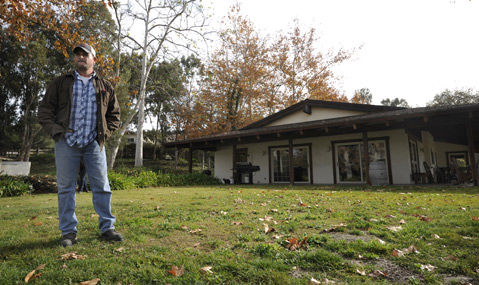
Kracke has also lawyered up with Rogers, Sheffield & Campbell to sue the city, he said, joining “multiple” property owners “trying to adjust to [the city’s] attack on our legal rights.” Paradise Retreats also refused to hand over company records, dating back to October 2012, detailing its properties and their financial wherewithal, requested by the city via subpoena in October.
“The real solution is fair regulation,” Kracke said, lobbying for a cap on the number of short-term rentals in any given neighborhood, detailed response plans when complaints arise, and for the city to have the power to steeply fine, and then revoke, the permit of a repeat offender.
“The city’s decision to prohibit all short-term rentals is an overreaching solution,” Kracke said. “Fair regulation can be developed which will address the concerns of housing and neighborhood quality while preserving the economic and social benefits provided by short-term rentals.”
So far, city officials aren’t buying it, even when Kracke factors in the $1.2 million in Transient Occupancy Taxes collected last year (plus another $245,000 for creek restoration), a number that could almost close the city’s $1.8 million gap in its general fund reserves.
“In a rush to judgment, the city arbitrarily changes direction and issues an enforcement order against us,” Kracke said, explaining his path to court. “They say we must cease business operations by January 1, 2017. They demand all of our private and confidential business records. There are serious legal flaws in the city’s request, including potential violations of fundamental constitutional rights. What would you do?”
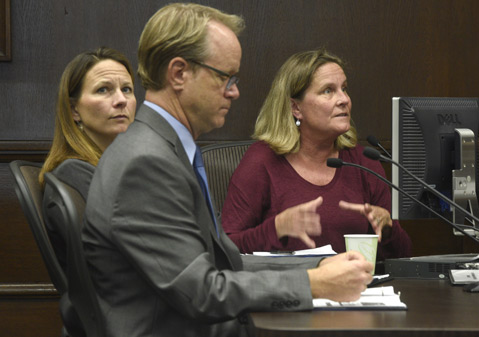
City Attorney Ariel Calonne said, “We don’t believe that collecting [Transient Occupancy Tax] creates an estoppel against enforcing the zoning ordinance,” meaning, generally speaking, that just because the city has been inconsistent on this issue doesn’t mean its position now is illegal. Kracke plans on filing his lawsuit early next year.
Meanwhile, the pressure is closing in on the county level, as well, where Kracke’s company manages 60 (of the 496 legitimate) vacation rentals in unincorporated areas, most of them in residential neighborhoods, from Montecito to the Santa Ynez Valley.
At last week’s County Planning Commission meeting, Leanne Schlinger, who runs Santa Ynez Vacation Rentals, encouraged commissioners to take a “responsible, rational, and educated” approach. “This is the Planning Commission, after all. Let’s come up with a plan, not a ban.”
Schlinger’s lawyer, Matt Allen, with Price, Postel & Parma, pointed out that a vast agricultural parcel shouldn’t be treated the same as a single-family home on a quarter acre, adding, “To create a ban that does no good except put reputable people out of business seems shortsighted.”
As written, the county’s ordinance is up for interpretation. On one hand it states that homes in residential neighborhoods are intended for single families on a non-transient basis. On the other, and more precisely, “short-term rentals are currently not defined in our code,” said Jessica Metzger, a senior planner with the county’s department of Planning and Development. Her job now is to help add that definition before the issue reaches the County Board of Supervisors for a final vote that promises more of the same spit and vinegar — and threatened legal action — that has characterized the debate from the get-go.
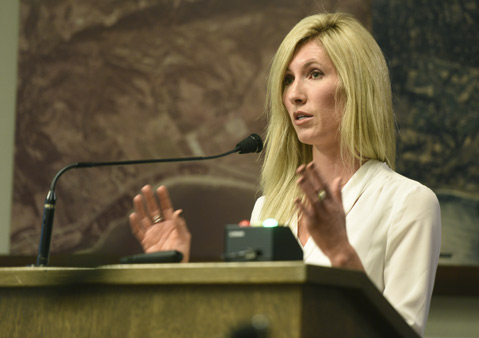
Strangers In Small Town, U.S.A.
Kelly Gray lives half a mile from the downtown Los Olivos flagpole, on a dead-end street with eight homes. Late last year, the family across the street moved, and their home, Gray said, was purchased by business partners looking to expand their portfolio of vacation rentals. Gray was upset by the news. For years, the residents of this little street knew one another, looked after each other’s kids and pets, and pitched in for speed bumps. Troubled by the prospect of a revolving-door vacation pad nearby, she looked up the zoning and found that operating a short-term rental in her neighborhood “is not an expressly permitted use.” Right away, she hand-delivered her “strong objections” in a letter to the Sotheby’s agent who listed the property. A handful of neighbors added their names, as well.
“I’ve visited the county several times in opposition to this,” said Gray, who’s an attorney. “I’m concerned about taking family rentals off the market and turning them into businesses. It has a really big effect on the community. We’ve lost the town.”
There’s not as much hyperbole to that last statement as one might think, according to Bob Field, former chair of the Valley Planning Advisory Committee in Santa Ynez. “Los Olivos residents have already lost their downtown to over-the-top wine tasting.” There are at least 32 tasting rooms in town, according to the Los Olivos Business Organization. Do the math with the estimated 400 single-family homes, and “that’s a wine bar for every 12 houses,” Field said. “Unbridled tourism has taken over, and we want to rein it in before Los Olivos residents lose their neighborhoods, too.”
Field pointed to data tediously compiled by Gray as she pored through maps found at online hosting sites. Shockingly, she discovered that upward of 40 percent of the homes in Los Olivos are set up to accommodate vacationers. This doesn’t bode well for a community’s foundations, she said: families with kids in local schools and churches, dads coaching little league, moms running point on just about everything else. Gray hopes that last week’s vote by the County Planning Commission may turn the tide as the Board of Supervisors takes it up next year.



